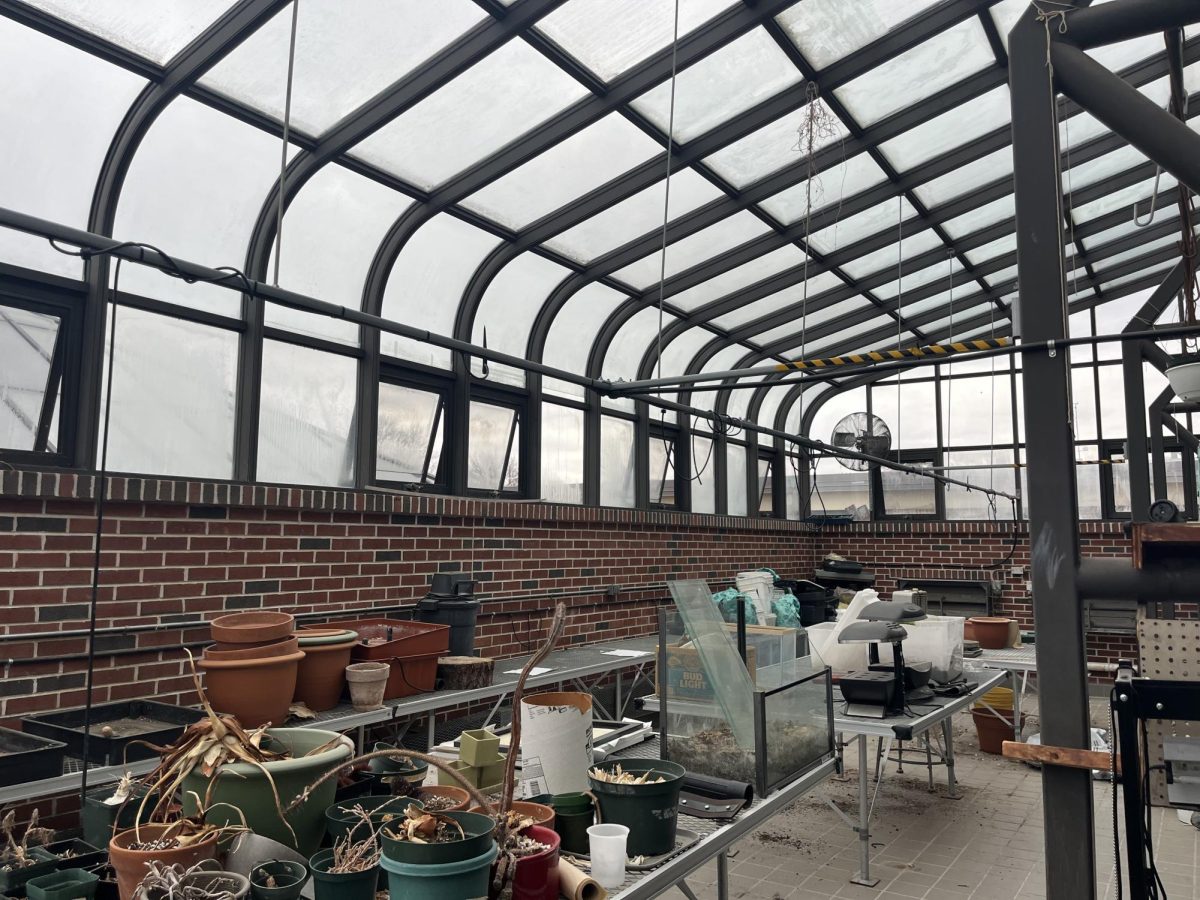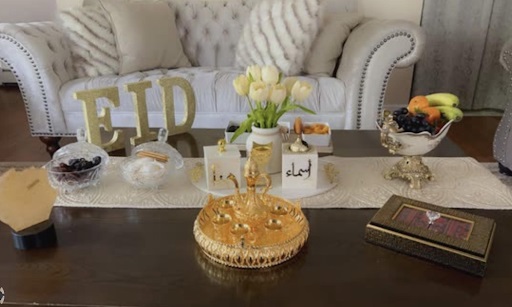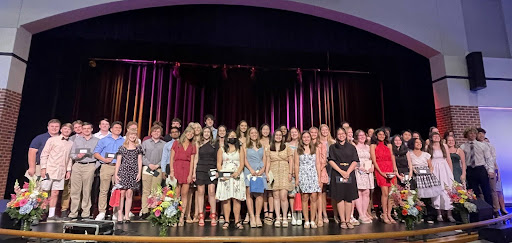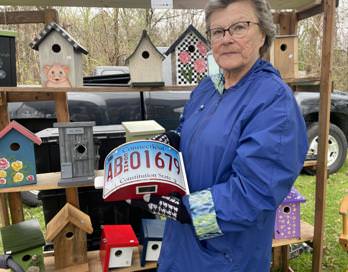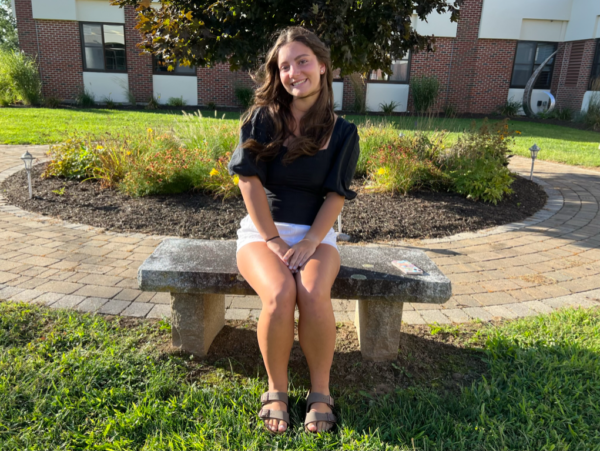Most people aren’t aware that South Windsor High School has a greenhouse, which has been dormant for the past decade.
The greenhouse was originally built back when the school was built in 1962, but was modified in 1991 during the school’s second rebuild. Its initial purpose was for the botany class at SWHS, which slowly dissipated due to lack of interest, and the greenhouse followed behind it, slowly becoming an unused relic.
“We had a botany class when I started, so it was designed for the botany class, and when I first started we used it a lot. It was a functioning greenhouse and used for that class, not necessarily for growing things that were getting planted outside, just for the class itself,” said science teacher Mrs. Field, who has been teaching at South Windsor High School for the past 29 years.
The botany course grew unpopular among the students, and died out around 10 years ago, around the same time the greenhouse started to fall into disuse. When it was first introduced to SWHS, it had a few design flaws that were overlooked prior to the build. These included that it was built in an area with no shade cover, causing it to get too hot in the summer and not retain enough heat in the winter. Combined with the fact that the cooling system, or the fans, have broken and don’t run anymore, it gets even hotter than before, heating up to past 100 degrees Fahrenheit in the summer. The greenhouse was also built on the second level of the school, causing it to get less exposure to the sun than if it were built on the ground level.
“It’s the cooling system that needs to be fixed. It’s something that can be fixed, it’s not like it needs to be torn down or anything,” science teacher Mrs. Eitel commented.
The greenhouse is salvageable, and it wouldn’t be outrageous to fix it, especially considering it wouldn’t need to be torn down and rebuilt, simply renovated. However, the money hasn’t been put into it for ages, considering it has been left for dead for over 10 years, untouched by most of the school’s residents. It simply isn’t deemed as a prioritized project because there is no longer a class associated with it anymore. The only group who even touches it now is the Environmental Club, run by Eitel, who use it in the winter, the only time it is somewhat usable. There is another alternative solution to fixing it, which is building a new one on the ground level where the unused garden is be behind the school.
“It would be cheaper to find a place on the ground and rebuild it. The money is just not there,” stated Field.
It would be cheaper to find a place on the ground and rebuild it. The money is just not there.
— Mrs. Field
Building it on the ground would feature more benefits than fixing it on the second level of the school. It would allow for more space for the greenhouse, an opportunity for a shade cover or less sun exposure 24/7, which would then allow for it to be more functional and potentially open up future course options for SWHS.
“It’s attached to a classroom, so it was, that classroom is considered a biology classroom, so it was for biology classes. So, I’m assuming it was for the botany class,” says Eitel.
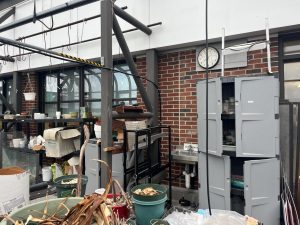
It was originally built for the purpose of an actual course, or courses that developed over the years. Greenhouses are also a beneficial addition to any science program at the high school level, as it can help students both grow and store plants all year round that cannot be grown outside. They are also a good practice in general for the environment.
“So, not every plant, but you can grow stuff like lettuce, so you’re not buying lettuce that’s being grown in Southern California in the winter time and shipped all the way across the country. That’s going to be good for the environment, and it’s also a good teaching tool,” said Field.
Having a greenhouse in a high school can teach students ethical plant growing skills and practices that can help any student interested in plant science, or science in general.
As we turn towards the future, the greenhouse will hopefully be reviewed and attempted to be rebuilt for the benefit of the science community at SWHS and for clubs and students at the school as well. For now, it will continue to be used as a learning opportunity for the Environmental Club, and also somewhat a storage space for science courses.



